MLB All-Star Game: The all-time National League All-Star team
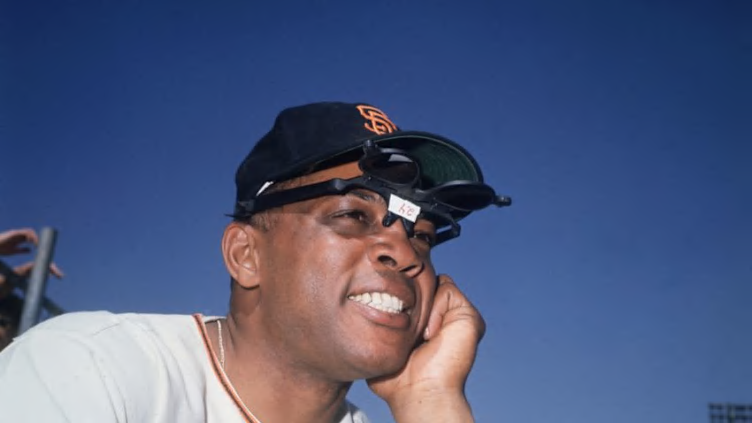
Using the best single seasons in baseball history and the current MLB All-Star Game roster rules, here is the all-time NL All-Star team.
The all-time American League All-Star team featured some of the greatest players in baseball history, including an outfield of Ted Williams, Ty Cobb and Babe Ruth. That’s hard to beat, but the NL will give it a shot with Barry Bonds in left, Willie Mays in center, and Hank Aaron in right. They make up three of the top five home run hitters of all time.
The NL squad had some terrific position battles, including the starting catcher spot and the starter at the hot corner. Second base went three deep because it was impossible to keep a certain baseball pioneer off the team. Shortstop features on old-school all-time great.
The seven starting pitchers for the NL range from the Dead Ball Era to the first part of the 21st century. There are a ton of strikeouts in these arms. The bullpen has two of those 1970s multi-inning relievers, along with a man who will be on the stage in Cooperstown this summer giving his Hall of Fame speech.
Just as with the AL roster, the rules for populating the NL roster are the current all-star roster rules. There are 32 total roster spots for each league. This includes 20 position players and 12 pitchers. As always, every team must be represented.
In the case of the all-time National League All-Star roster, there were a number of younger teams who only had one player, including the Diamondbacks and Padres. In fact, players from three teams dominated the NL roster. The Dodgers, Cardinals, and Cubs combined for 14 of the 32 players who made the team.
With the MLB All-Star Game to be played on Tuesday, July 17, it’s fun to consider an all-time All-Star Game that would feature the best players from each league in their best seasons. This is the all-time NL All-Star roster.
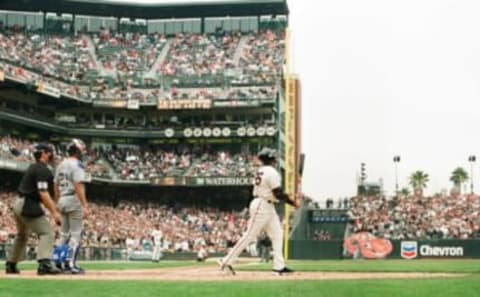
Starting Lineup
SS Honus Wagner, Pirates (1908—.354/.415/.542, 53 SB)
DH Stan Musial, Cardinals (1948—.376/.450/.702, 18 3B)
LF Barry Bonds, Giants (2001—.328/.515/.863, 73 HR)
CF Willie Mays, Giants (1965—.317/.398/.645, 52 HR)
RF Hank Aaron, Braves (1963—.319/.391/.586, 44 HR)
2B Rogers Hornsby, Cardinals (1924—.424/.507/.696, 121 R)
1B Albert Pujols, Cardinals (2009—.327/.443/.658, 47 HR)
3B Mike Schmidt (1981—.316/.435/.644, 31 HR in 102 G)
C Johnny Bench, Reds (1972—.270/.379/.541, 40 HR)
SP Steve Carlton, Cardinals (1972—346.3 IP, 1.97 ERA, 310 K)
Starters by Position
Catcher
1972 Johnny Bench: You can’t have an all-time NL team without Johnny Bench at catcher. His combination of hitting and defense makes him an easy pick. The year chosen for this team is 1972, four years after he won the NL Rookie of the Year Award and two years after he won his first NL MVP Award. In 1972, Johnny Bench was an NL MVP once again. He led the league in home runs, with 40, and RBI, with 125. He also won the Gold Glove Award for the fifth straight year. His Gold Glove streak would eventually extend to 10 straight years.
First base
2009 Albert Pujols: When Albert Pujols was young and great, each season was just as good as the next. He was a consistent 8 to 9 WAR player from his early 20s to his late 20s. This stretch culminated in what may have been his best season, 2009. He won the second of back-to-back NL MVP Awards, giving him three total. He hit .327/.443/.658, leading the league in on-base percentage and slugging percentage. He also led the league in runs scored and home runs. This was peak Pujols.
Second base
1924 Rogers Hornsby: The 1924 season was one of six straight seasons in which Rogers Hornsby led the NL in batting average, on-base percentage, and slugging percentage. In addition to hitting .424/.507/.696, Hornsby led the NL in hits, runs, doubles and walks. Despite his excellence with the bat, he finished second in MVP voting to pitcher Dazzy Vance of the Brooklyn Robins.
Shortstop
1908 Honus Wagner: The greatest season of Honus Wagner’s career earned him the starting spot on this all-time NL All-Star roster. Even though the bow-legged, barrel-chested Wagner didn’t look like a speedy base stealer, his .354/.415/.542 hitting and 53 steals in 1908 put him in the leadoff spot on this team so he can be the catalyst for the National League.
Third Base
1981 Mike Schmidt: Choosing a starting third baseman for the National League was one of the most difficult decisions. There were three who were very close. Ultimately, Mike Schmidt was the pick for his incredible performance in the strike-shortened 1981 season. Schmidt won the NL MVP Award for the second straight year in 1981 when he led the NL in runs, home runs, RBI, on-base percentage, slugging percentage, and total bases. He also won the Gold Glove Award and the Silver Slugger.
Left Field
2001 Barry Bonds: In 2001, Barry Bonds was to MLB as Bo Jackson was to Tecmo Bowl. Bonds won his fourth NL MVP Award and would go on to win the award in each of the next three seasons. In 2001, he hit .328/.515/.863 and set the single-season record with 73 home runs. He had a handful of seasons that would have qualified him for the starting spot on this team, but those 73 home runs made 2001 the pick.
Center Field
1965 Willie Mays: Like his godson in left field, center fielder Willie Mays had multiple seasons that qualified him for this starting spot. His 52-homer 1965 season was chosen as the representative season for the legend. In addition to the big flies, Mays led the NL with a .398 OBP and .645 slugging. It was his second MVP season, but he deserved a few more along the way.
Right Field
1963 Hank Aaron: Rounding out the outfield with Bonds and Mays is 1963 Hank Aaron. It wasn’t difficult selecting Aaron for the starting spot on this squad, but it was difficult figuring out which season to use. In 1963, Aaron hit .319/.391/.586 and led the league with 121 runs scored, 44 home runs, and 130 RBI. Even though we don’t think of Aaron as a base-stealer, he stole 31 bases this season, making him a 30-30 guy.
Designated Hitter
1948 Stan Musial. Stan “The Man” had his best season in 1948 when he played at least 42 games at all three outfield positions. Even though he played long before the DH existed, he ends up at DH for this mythical all-time NL All-Star roster. In 1948, Musial dominated the National League with a .376/.450/.702 batting line, leading the league in all three metrics. He also led the NL in runs, hits, doubles, triples, RBI and total bases.
Starting Pitcher
1972 Steve Carlton: There were many great pitchers to choose from among the all-time greats in the National League. The starting nod goes to Steve Carlton. In 1972, Carlton pitched 346.3 innings with a 1.97 ERA. He started 41 games and completed 30, with eight shutouts. He was 27-10 for a team that went 62-94. During the season, Carlton lost four games in which he pitched at least seven innings and gave up two earned runs or fewer. He could easily have won 30 or more games with a little better run support.
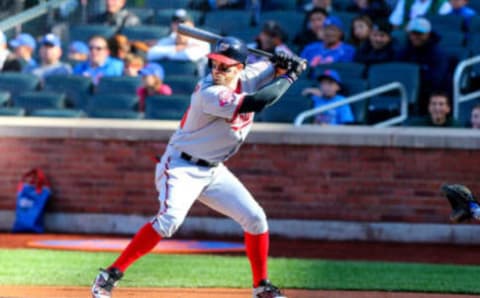
Position Player Reserves
C Mike Piazza, Dodgers (1997—.362/.431/.638, 40 HR)
1B Todd Helton, Rockies (2000—.372/.463/.698, 59 2B)
2B Joe Morgan, Reds (1975—.327/.466/.508, 132 BB)
2B Jackie Robinson, Dodgers (1949–.342/.432/.528, 37 SB)
SS Ernie Banks, Cubs (1959—.304/.374/.596, 143 RBI)
3B Ron Santo, Cubs (1967—.300/.395/.512, 107 R)
3B Adrian Beltre, Dodgers (2004—.334/.388/.629, 48 HR)
CF Duke Snider, Dodgers (1953—.336/.419/.627, 132 R)
RF Larry Walker, Rockies (1997—.366/.452/.720, 49 HR)
RF Bryce Harper, Nationals (2015—.330/.460/.649, 42 HR)
RF Giancarlo Stanton, Marlins (2017—.281/.376/.631, 59 HR)
Catcher
1997 Mike Piazza: The numbers Mike Piazza put up in 1997 were ridiculous, but it’s just as ridiculous that he didn’t lead the league in any of the rate stat categories with a .362/.431/.638 batting line. Tony Gwynn led the league in hitting with a .372 average and Larry Walker was right behind him, at .366. Walker (.452) and Barry Bonds (.446) had higher on-base percentages. Walker also out-slugged Piazza (.720). Despite being shut out of leading the league in any of these categories, it was a terrific season for Piazza.
First Base
2000 Todd Helton: It’s easy to disparage a Coors Field hitter, especially when you see a guy hit .372/.463/.698 like Helton did this season. The thing is, Helton hit .353/.441/.633 away from Coors Field. He deserves his spot on this team.
Second Base
1975 Joe Morgan: Little Joe Morgan earned his spot on this all-time NL All-Star roster with the first of his back-to-back NL MVP seasons. In 1975, Joe led the NL in on-base percentage and walks. He also won the Gold Glove Award and was a key cog in the Big Red Machine.
Second Base
1949 Jackie Robinson: Joining Rogers Hornsby and Joe Morgan at second base is baseball pioneer Jackie Robinson. It could have been 1949 or 1951 for Robinson, but the 1949 season won out thanks to his NL MVP Award and league-leading .342 batting average and 37 steals.
Shortstop
1959 Ernie Banks: The second of Ernie Banks back-to-back NL MVP seasons earned him a reserve spot on this roster. Banks hit 45 homers and had a league-leading 143 RBI in 1959. The league was learning just how good he was. He also led the league with 20 intentional walks. If this hypothetical all-star game were actually played in a fantasy world somewhere, we’d make it a double-header so Banks could say, “Let’s play two!”
Third Base
1967 Ron Santo: Santo’s numbers don’t look as good as some other players on this team, but you have to remember the era in which he played. The 1960s were a pitcher’s era, especially the 1967 season. National League hitters hit .249/.310/.363 in 1967. Santo hit .300/.395/.512 and flashed a good glove at third base.
Third Base
2004 Adrian Beltre: Adrian Beltre is more well known for his many years in the American League, but he had an epic 2004 season with the Dodgers when he was 25 years old. That season lands him a backup role on this roster. He hit .334/.388/.629 with a league-leading (and career-high) 48 home runs. He also set career highs in hits, runs scored and RBI.
Center Field
1953 Duke Snider: This is a case of the hypothetical world matching the real life world. In the 1950s, the three New York teams—Yankees, Dodgers and Giants—each had a terrific center fielder. The Yankees had Mickey Mantle. The Giants had Willie Mays. Lesser known, but still a very good player, was the Dodgers’ Duke Snider. Duke didn’t quite match Mays in real life and he doesn’t quite match Mays on this fantasy roster.
Right Field
1997 Larry Walker: Like Todd Helton, mentioned above, Larry Walker’s numbers weren’t entirely dependent on Coors Field. In fact, he hit better away from home than at his hitter-friendly home park. On the road, Walker hit .346/.443/.733 and launched 29 of his 49 home runs. Overall, Walker hit .366/.452/.720 and led the league in dingers, total bases and won the Gold Glove Award for his defense in right field.
Right Field
2015 Bryce Harper: The Nationals needed a representative and it didn’t feel right going with a Montreal Expos player, so Bryce Harper made the cut for his excellent 2015 season. That year, he hit .330/.460/.649 with a league-leading 118 runs scored and 42 homers. He won the NL MVP Award.
Right Field
2017 Giancarlo Stanton: The last position player added to the roster is a guy who had a 59-HR, 132-RBI season just last year. It’s Giancarlo Stanton, the sole representative for the Miami Marlins. Not only did he lead the league in homers and ribbies, he also led in slugging percentage and won the NL MVP Award.
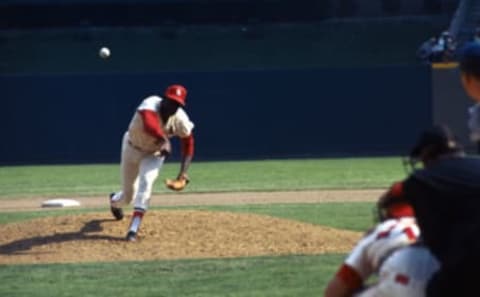
Starting Pitchers Reserves
SP Christy Mathewson, Giants (1908—390.7 IP, 1.43 ERA)
SP Dwight Gooden, Mets (1985—276.7 IP, 1.53 ERA)
SP Bob Gibson, Cardinals (1968—304.7 IP, 1.12 ERA)
SP Sandy Koufax, Dodgers (1966—323 IP, 1.73 ERA)
SP Randy Johnson, Diamondbacks (2001—249.7 IP, 2.49 ERA)
SP Greg Maddux, Braves (1995—209.7 IP, 1.63 ERA)
After starting pitcher Steve Carlton gets his innings, the next guy up is 1908 Christy Mathewson. Of the many great seasons “Big Six” had, the 1908 season was his best. He was 37-11 with a 1.43 ERA in 390.7 innings. He threw 34 complete games and 11 shutouts. When he wasn’t starting, he would sometimes pitch in relief and actually led the league with five saves.
Steve Carlton and Christy Mathewson were before my time, but Dwight Gooden was bigger than life for the 14-year-old version of me in 1985. Gooden had already been very impressive in his 1984 NL Rookie of the Year season, but took his game to another level in 1985. He was 24-4 with a 1.53 ERA in 276.7 innings. He started 35 games that year and only allowed more than three earned runs in one of them. He had 33 quality starts and 11 starts with double-digit strikeouts. He was just 20 years old and it seemed like the sky was the limit for Doc.
The next man out of the bullpen is the intimidating Bob Gibson, from 1968. This was the year Gibson simply refused to allow the other team to score. He had a 1.12 ERA in 304.7 innings. He pitched 13 shutouts and 12 other games in which he allowed just one run. He “only” won 22 games because the Cardinals offense didn’t help him much. He had two 1-0 losses, a 2-0 loss, and three 3-2 losses.
Sandy Koufax had three Cy Young seasons to pick from and you couldn’t go wrong with any of them. We went with his final season, when he was 27-9 with a 1.73 ERA in 323 innings. He had 27 complete games, five shutouts and struck out 317. We could have gone with the previous year, when he was 26-8 with a 2.04 ERA and 382 strikeouts in 335.7 innings. Or his 1963 season, when he was 25-5 with a 1.88 ERA and 306 strikeouts in 311 innings.
The most recent starting pitcher on the all-time NL All-Star roster is the Big Unit, Randy Johnson. In 2001, Johnson struck out an incredible 372 batters in 249.7 innings and went 21-6 with a 2.49 ERA. This was during his stretch of four straight NL Cy Young Award seasons. He also won the AL Cy Young Award with the Seattle Mariners in 1995.
Greg Maddux made this team with his incredible 1995 season. He was nearly as good in 1994, but the strike limited him to just 25 starts that year. He only made 28 starts in 1995 because of the shortened season, but he was very impressive, going 19-2 with a 1.63 ERA in 209.7 innings. He won the NL Cy Young Award both seasons, capping off four straight years as the best pitcher in the league.
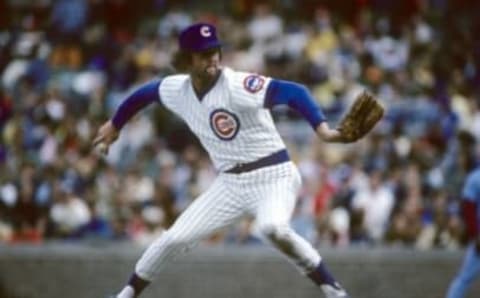
Relief Pitchers
RP Bruce Sutter, Cubs (1977—107.3 IP, 1.34 ERA)
RP Rich Gossage, Pirates (1977—133 IP, 1.62 ERA)
RP Eric Gagne, Dodgers (2003—82.3 IP, 1.20 ERA)
RP Trevor Hoffman, Padres (1998—73 IP, 1.48 ERA)
RP Corey Knebel, Brewers (2017—76 IP, 1.78 ERA)
This all-time NL All-Star team features two relief pitchers from the 1977 season. One is the Cubs’ Bruce Sutter, who earns his spot with a 1.34 ERA in 107.3 innings. He saved 31 games that year, which wasn’t a league-leading total. He finished second to Rollie Fingers, who had 35. Still, it was the best ERA and best FIP of his career.
The other 1977 reliever is Goose Gossage, who will have to run from bullpen to bullpen during this hypothetical All-Star Game because he also made the all-time AL All-Star team for his 1975 season. Gossage pitched for the Pittsburgh Pirates in 1977. He won 11 games in relief and saved 26. He also struck out a career-high 151 batters in 133 innings. As Goose himself would say, they don’t make relievers like him anymore.
Remember when Eric Gagne was the most dominating reliever in baseball for three years? His 2003 season makes this all-time roster. He had a 1.20 ERA and saved a league-leading 55 games. In 82.3 innings, he struck out 137 batters and walked just 20. He won the NL Cy Young Award and finished second in NL MVP voting. And he did it all while looking like the chubby guy with glasses on the Best Buy Geek Squad.
It may surprise Trevor Hoffman fans to learn that he pitched 18 years in the big leagues and only led the league in saves twice. One of those times was the season that landed him on this all-time NL All-Star roster. In 1998, Hoffman saved a league-best 53 games and had an impressive 1.48 ERA. Despite being worth about half the wins above replacement as his teammate, Kevin Brown, Hoffman nearly stole the NL Cy Young Award from Tom Glavine. Hoffman had more first place votes than Glavine, but Glavine had more points, although Brown should have won it.
The final man on this roster is the lone representative of the Milwaukee Brewers, reliever Corey Knebel. The Brewers have been around since 1969 but have only been in the National League since 1998. That leaves just 20 seasons to choose from. Knebel’s 2017 was the pick to be the Brewers’ representative. He had a 1.78 ERA, 39 saves, and 126 strikeouts in 76 innings, while leading the NL in appearances.
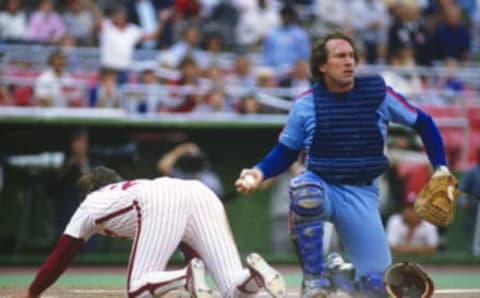
The Snubs
Position Players
If this team needed three catchers, 1982 Gary Carter would have made the team if he qualifies as part of the Washington Nationals franchise. Major League Baseball has the Nationals linked with the Expos historically, but I don’t believe Expos fans claim the Nationals as their own. Their franchise was suspended in time in 2004. If MLB expands and places a team in Montreal, I would guess Expos fans would want their history back.
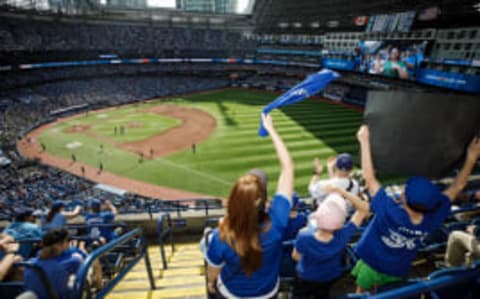
Jays Journal
Honus Wagner and Ernie Banks are more than enough shortstop to handle the spot, but Arky Vaughan has an argument to be included. In 1935, he hit .385/.491/.607, leading the league in all three statistics. He also led the league in walks. If sportswriters knew about WAR in those days, he might have won the NL MVP Award instead of finishing third behind catcher Gabby Hartnett and pitcher Dizzy Dean.
The all-time NL All-Star roster already has three third baseman, but 1973 Darrell Evans is sitting in the corner thinking, ‘What about me, man?’ Evans launched a career-high 41 homers that year and had his only 100-RBI season. He also scored 114 runs, led the league in walks and hit .281/.403/.556.
It was difficult leaving Sammy Sosa off this roster. In 2001, Sosa hit .328/.437/.737, with 146 runs, 64 homers, and 160 RBI. Those are video game numbers. Of course, there likely were some extenuating circumstances. In this case, the team already has four right fielders, two of which are the sole representatives of their respective teams, so Sammy was snubbed.
Pitchers
With no position players making the team from the Mets, it came down to a choice between 1985 Dwight Gooden and 1971 or 1973 Tom Seaver. I went with Gooden, but it could have gone either way. Seaver lived up to his “Tom Terrific” nickname for numerous seasons, but 1971 and 1973 were particularly impressive. In 1971, he was 20-10 with a 1.76 ERA and 289 strikeouts in 286.3 innings. In 1973, he was 19-10 with a 2.08 ERA and 251 strikeouts in 290 innings. Either could have made the team.
A pitcher from a long-ago era also just missed the cut. Philadelphia’s Pete Alexander had a handful of seasons that could have qualified him for a spot on this roster, including three straight years with 30 or more wins. In 1915, he was 31-10 with a 1.22 ERA in 376.3 innings. Those were different times, as can be seen by the 36 complete games and 12 shutouts tossed by Alexander.
Two relief pitchers could be considered snubs. In 1974, the Dodgers’ Mike Marshall pitched more than three times as many innings as a modern-day closer. He appeared in 106 games and had a 2.42 ERA in 208.3 innings. That’s almost two out of every three games the Dodgers played that year. He won 15 games and saved 21. He also won the NL Cy Young Award and finished third in NL MVP voting.
Another dominant season by a reliever that just missed the cut was the 1990 season by big Rob Dibble. The nastiest of the “Nasty Boys,” Dibble had a 1.74 ERA and 136 strikeouts in 98 innings. This was one of his two All-Star seasons. He was the proverbial meteor that flashed across the sky and burned out quickly, but when he was good, he was really good.
Next: Relief Roundup: Pujols powers Angels hopes
That’s our look at our view of the National League’s all-time team for the MLB All-Star Game. Who do you think made it that should not have? Who was left off? Comment below!!